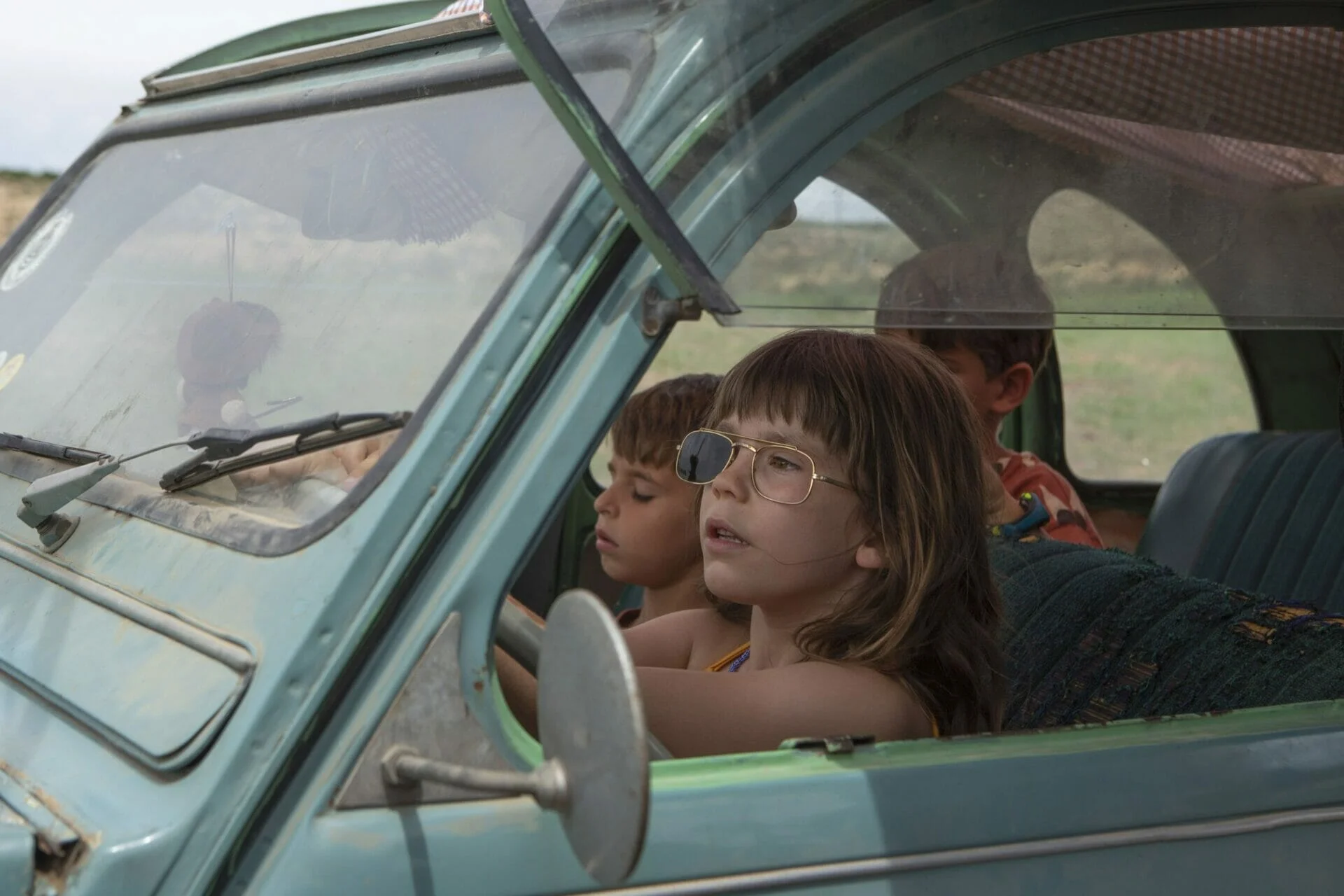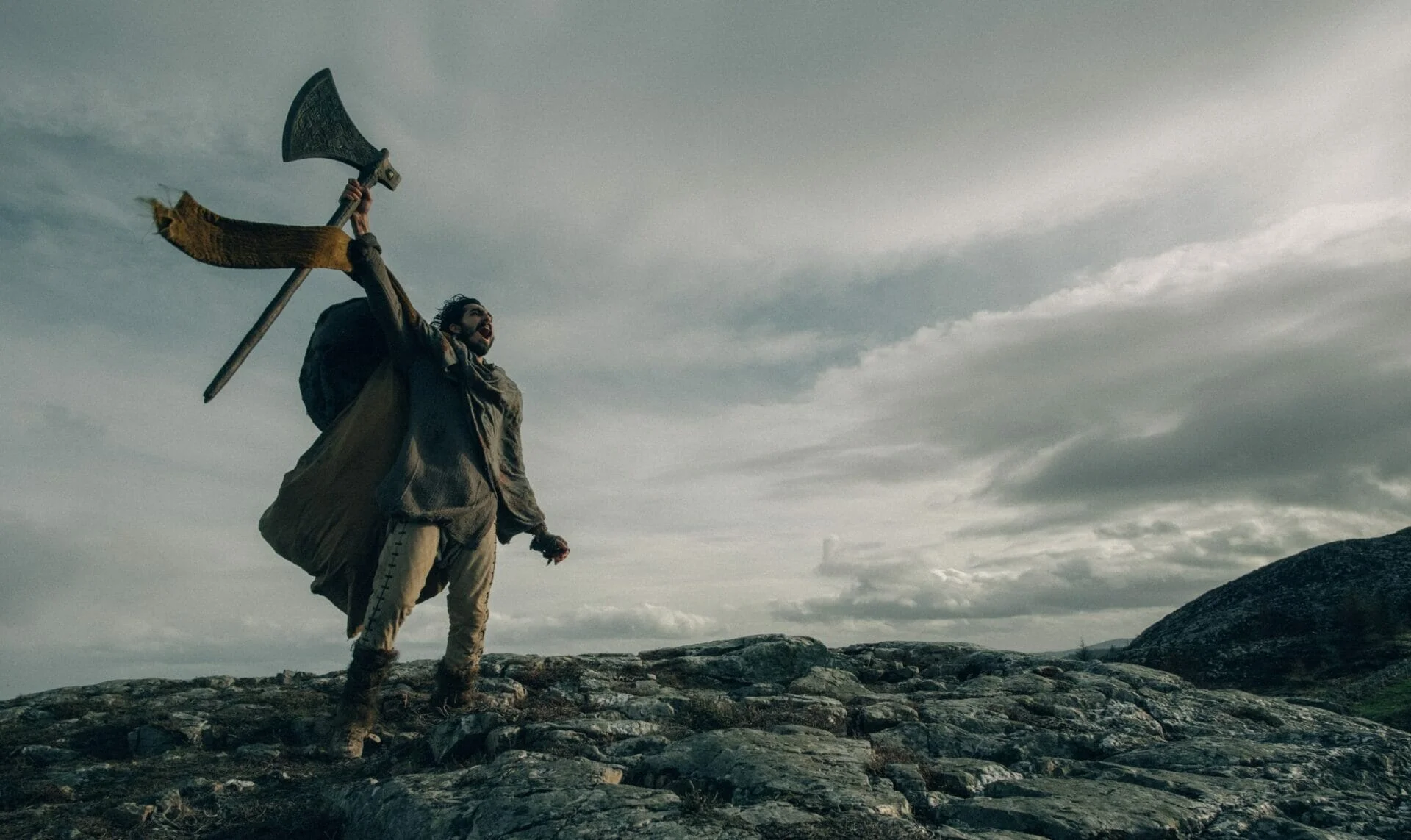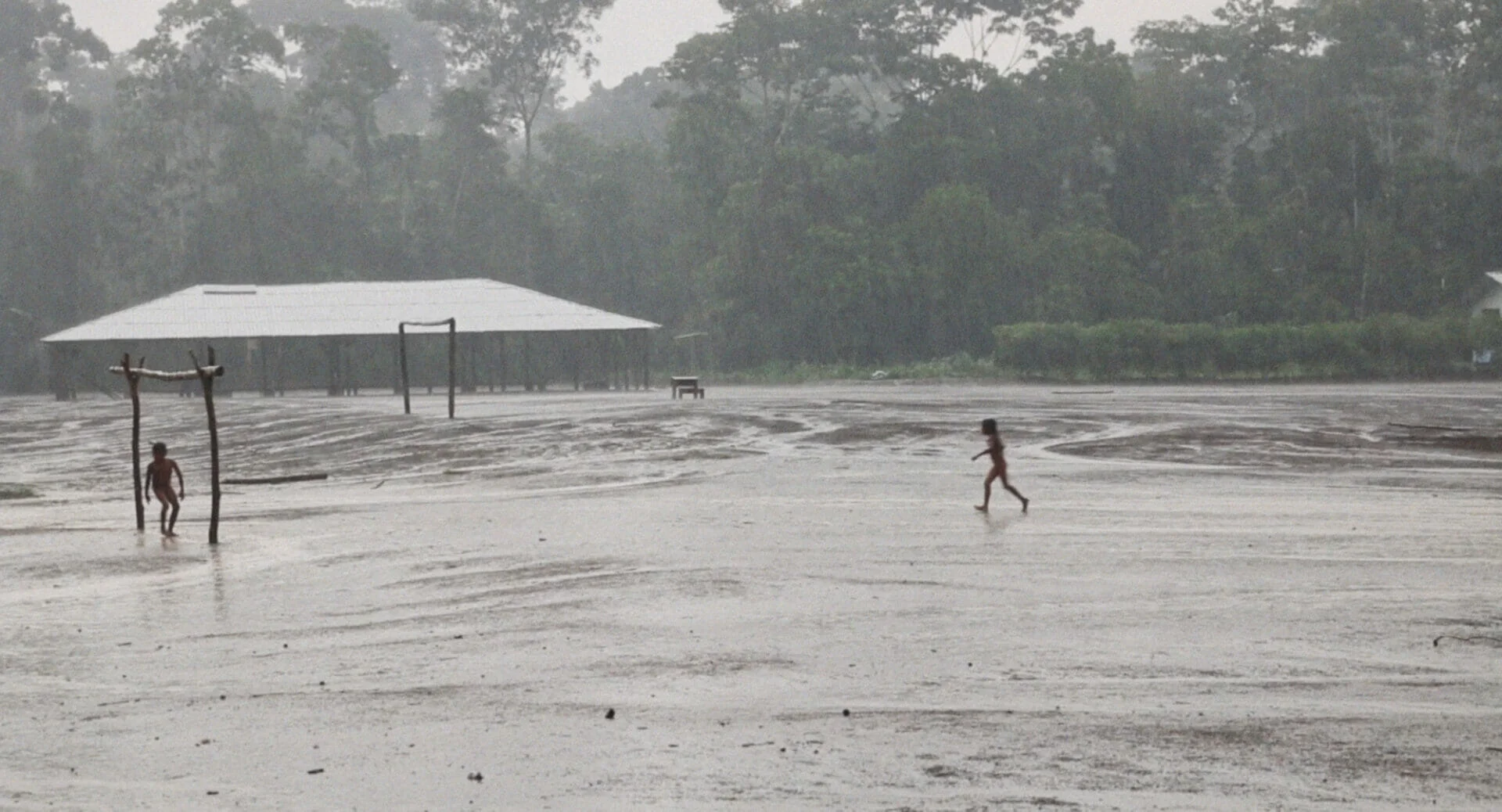
Inês T. Alves was born in Portugal in 1987. She studied Cultural Narratives in Portugal, Spain, and Italy, and Documentary Film at the University of the Arts in London. Her short documentary, Around Corners, about Maputo, the capital of Mozambique, centered on her family memories and won the New Cinema Award in Porto/Post/Doc Festival (Portugal).
Waters of Pastaza (Juunt Pastaza Entsari) is Alves’ first feature film and competed in the section called Generation of the 72nd International Film Festival Berlin. This powerful environmentalist take shows the everyday life of a community of children living surrounded by the Amazon rainforests.
Hypercritic interviewed the director Inês T. Alves about her latest work.

How did the movie come to be?
In 2018, when I first arrived in Suwa, an isolated community of about eighty inhabitants in the Ecuadorian Amazon Rainforest, I didn’t have the idea of making this documentary. I had only the very basic equipment with me – this also explains the resolution of the images. The aim was to do a film workshop with the locals, to share my knowledge. The adults, though, were very busy doing other things. On the contrary, the kids were very interested. We spent so much time together. I filmed the things they were doing and talked about the process of filmmaking and also organized film screenings at night. The kids were eager to show me around, and I was so amazed by the way they were living. So autonomously, resourcefully, and still collaborating very much among them. So, I proposed to the community to make a film focused on the kids. Moreover, the Amazon, of course, was already a place of interest to me.
What is the message you wanted to convey?
This movie is a way for those kids to communicate with the world. Especially now, that the Amazon is suffering such massive devastation and especially in that region. And all this has to do with us, here in Europe, with the new green economy. Some of the trees that grow in the Amazon forest are used for building wind turbines because their wood is very flexible and robust. And so, ironically lots of these trees are being cut to produce “clean energy.” In Europe, we must change in favor of more clean energy, but we should wonder, it’s this really clean? I think it’s essential to look at that and be aware. The way these kids are living, and how important their environment is to them (and for all of us), is something we must keep in mind, protect and respect.
Are these kids aware of the broader public outside? Do they know that so many people saw them in Berlinale?
I don’t think so. Of course, I told them that Waters of Pastaza was going to be shown here in Europe. But I don’t think they can have a notion of how many people will see them. It makes me a bit sad that they could not be here, but I will go back there for sure to show them the film. And then I will try to explain it to them. They have internet now, since very recently, so they are getting more in touch with the rest of the world.
Do you think these kids had the chance to self-representing themselves?
Kind of, the movie was a dialogue between us. Many times they asked me to film something. Often, they suggested what they found interesting to be filmed. Also, I had a lot of conversations with Paint, one of the oldest girls appearing in the movie, to whom I would go to ask for advice. However, there have also been one or two situations in which they asked me not to show some things. They were afraid their parents would see them. Even though it was nothing terrible, just them being silly or a bit reckless. However, I promised and didn’t include that footage in the final cut. I would indeed have liked to include more images made by the kids with their smartphones, but unfortunately, I lost most of those images before coming back.
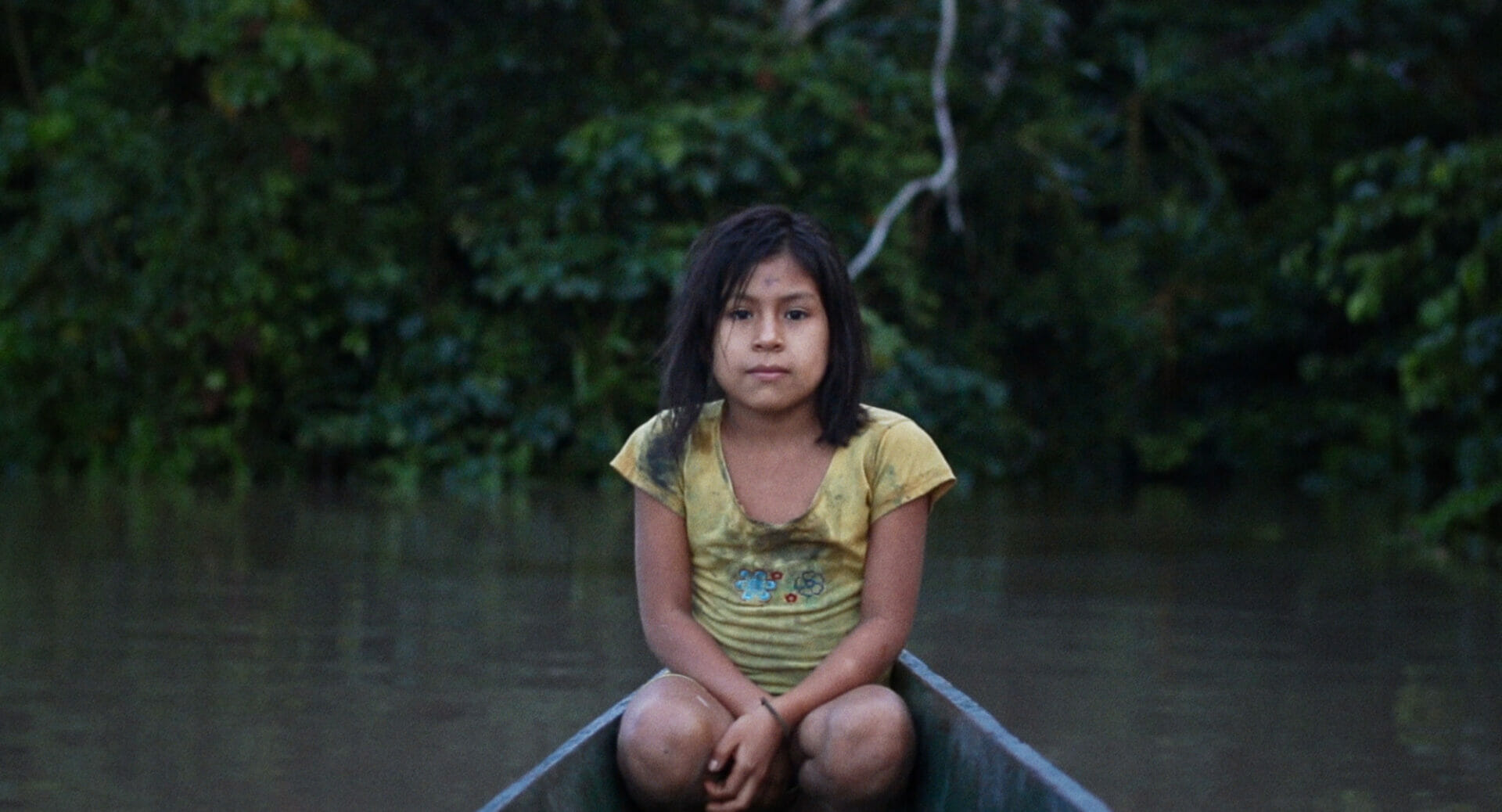
In Waters of Pastaza, there are very few scenes where you see adults. Was it your stylistic choice?
Actually, parents are not very visible in the movie because these kids are self-sufficient and self-organized, they even provide for food. The kids live with their parents, each family has its own house. But they do a lot of things alone and collaborate among themselves. So, what we see in the film it’s true. Almost all of those situations, happen without the parents there, but of course, initially, the parents teach them how to fish or cut trees. But then the parents encourage them to go on alone. They let them discover the world. They trust them a lot, somehow. In addition, I also think that not showing the adults at all, transports the viewer to a place of fable/utopia, emphasizing the strength of those kids. It’s like those kids were living in a parallel universe.
While watching this movie, the book The Lord of the Flies by William Golding came to mind. Surprisingly, in Waters of Pastaza, there is not much conflict or violence among kids. Is it the reality or have you decided not to show it?
What we see in the documentary is what is really going on there. The children are collaborating in a very harmonious way. However, maybe it has been a little romanticized in the film, because of course they do have some conflicts between them. I didn’t decide deliberately to avoid showing violence, I mean consciously. The time I saw more conflicts among them, was actually in school. There were somehow moments of competition, like, “ah, you know how to read, and I cannot learn.” And I didn’t film so much in this context, I was more interested when they were outside, in nature.
The kids are very pragmatic with how they relate, especially to nature. When they are fishing or killing the giant tarantula, they are capable of brutality, but it is also respectful and pragmatic at the same time. Of course, there is also a lot of conflict between adults and domestic violence. This community is not paradise, and I didn’t want to give this impression. But I think, especially in documentaries, sometimes it’s harder to focus on more subtle things than very tangible problems. In this case, I wanted to show that there are still other ways of living on this planet, and that there is this universe of imagination, typical of kids, that we sometimes lose. And my final intention was to bring the inspiration I found with them to the world.
How was it in school?
It was tough even for me. I was not comfortable at all with my role in the school. I felt that it was a place where the kids felt somehow constrained. The kids were often frustrated. Although some already knew how to do many complex things outside of school. The state is organizing the school, and although the teacher is local, he is paid and trained by the government. The kids learn what other kids learn in the cities since they use the official state books. This is very crazy because what they see is a foreign reality.
For example, when they learn the food wheel. There are so many different foods they have never seen before, like cheese. And there are parts of the book, where they talk about indigenous peoples, about communities like this one, but always from the perspective of “the other.” So, in school, the kids are seeing themselves as “the other.” However, they also learn things related to their own culture, like the Achuar language. And the perception they have of themselves of course is changing, now even more because of smartphones and the internet.
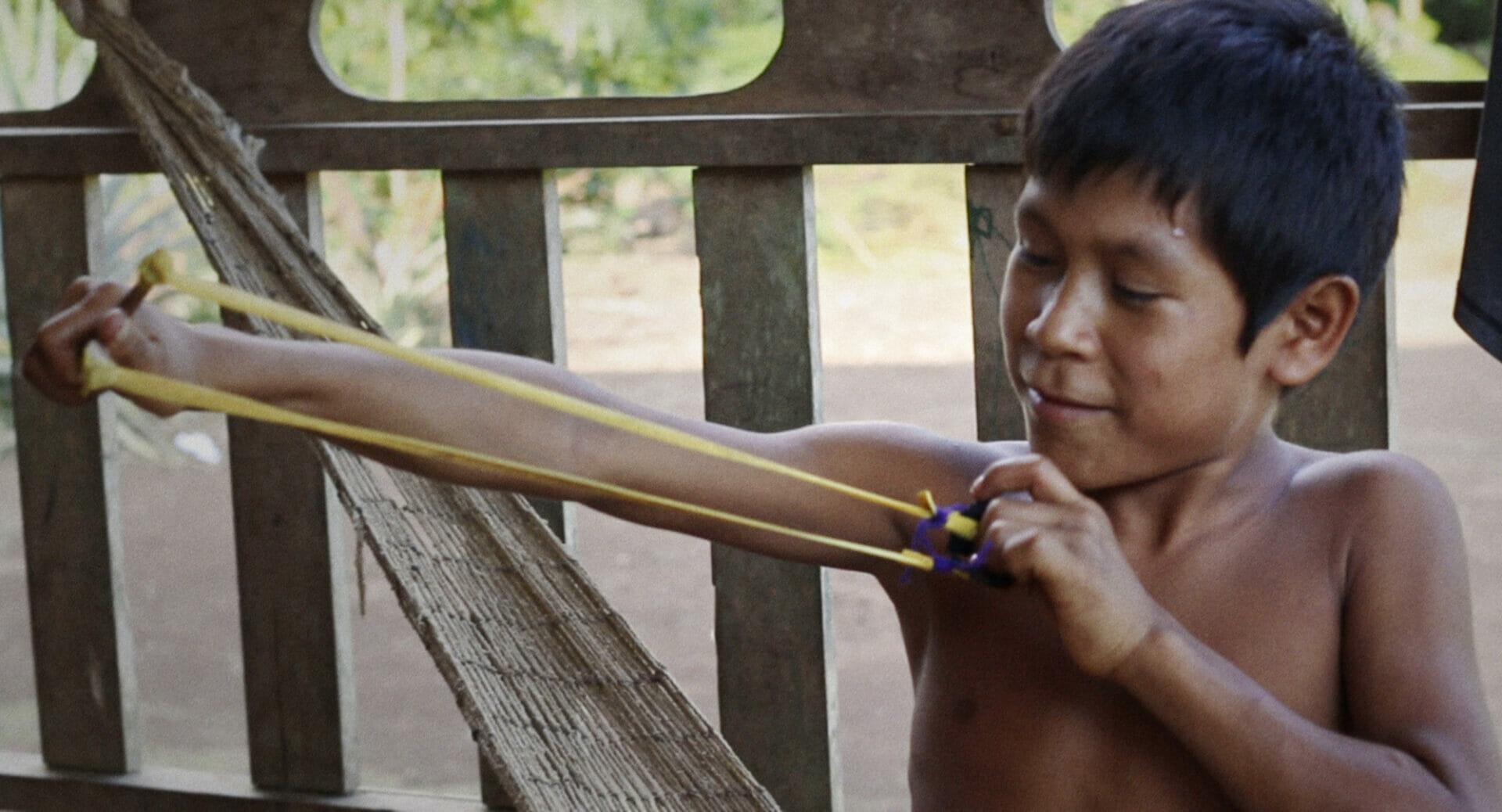
But don’t you think that this image of a harmonic community you show in Waters of Pastaza goes along with the idea of the “noble savage” typical of the colonial era? I ask this also because your previous work was about Portuguese colonialism in Africa, and I wonder if such a topic still resonates with you.
In colonial approaches you see the indigenous as the other, most of the time inferior that needs to be educated by the “civilized” world. My movie indeed has some kind of romanticism, regarding the children’s world, but the intention it’s kind of the opposite. Those kids are educating us. They make us face our loss of knowledge and reflect on childhood. To which degree are we infantilizing the children with such protectionist education? So, in this movie, these kids are not the “others,” but they are “us.” We were also like them, and we should not forget that. I feel that any kid here in the west can feel close to those kids there because they are indeed not that different in essence. Of course, we cannot ignore that in this documentary there is still a white person filming the indigenous. Although, what is more, important to me is the type of relationship we established, the cultural interchange was crucial.
Can you share an example of how the protagonists of the movie resemble kids growing up in cities?
For example, regarding the scenes with smartphones, of course, they were fascinated by technology as every kid is. They got electricity only two months before I arrived, so everything was quite new for them at the time of my shootings. I think it’s interesting to see how all that is mixing with their routine, how it was, and what will happen. My intention was not to say if this is good or bad. To be honest, I don’t think we will destroy them with these foreign objects. Of course, things will change. Mainly because they never had other technology putting them in contact with the outside, like radio or tv. However, they have the right to decide how they want to relate to that.
There is a short scene, where a woman with a camera appears, almost like a vision. It’s you. Why did you include it?
I was there with the camera and showed what I saw. But I didn’t film everything that was happening around there. I wanted to show that there is a person behind these choices. Especially at the end, in the editing process, there were a lot of decisions to be taken. And there is of course my point of view and my subjectivity. We can discuss or question them. Life is always what happens between relations, among people, now. The presence of someone will always influence reality. Just the fact, the kids decided to call me to film something, it already changes the environment. So it’s essential to be aware of that. Finally, I also wanted to give the perspective of the kid filming me, even if just for brief seconds.


